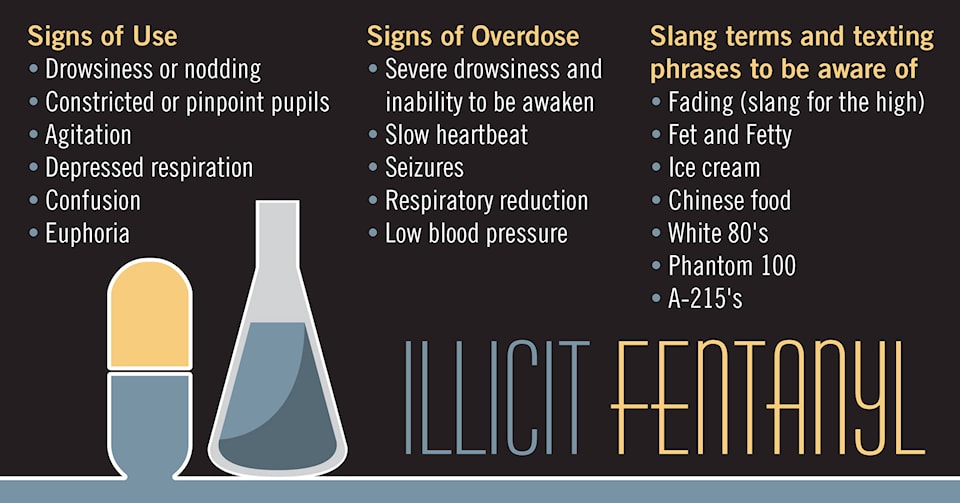After the first fentanyl overdose on Haida Gwaii, south-end parent and community volunteers are helping high school students avoid the next one.
Parent Kimberley Claggett recently met with the student council at GidG̱alang Ḵuuyas Naay to help start a bunch of new clubs at the Queen Charlotte school — everything from music, science, journalism, radio, art, and tattoos clubs to Dungeons & Dragons.
So far, they’ve recruited 11 volunteers to help out, and also organized a talk last week from paramedic Ole Olsen about the current state of street drugs.
Volunteers are also dropping by the school at lunch on Tuesdays for a community café to chat with students and show the community cares.
“As much as I’m concerned for my own kids, I’m concerned for other kids,” said Claggett, who spoke at a Haida Gwaii school board meeting last Tuesday.
“I’ve known them since they were born,” she said. “And I’m scared we’re going to lose them — fentanyl is a game-changer.”
At the board meeting, school trustees agreed to send a letter of support for a Gwaii Trust Society grant that will go towards bringing the Odd Squad for a series of student talks on Haida Gwaii, likely in late January.
Created in 1997 by a group of Vancouver police officers, the Odd Squad is a non-profit charity that offers realistic presentations on drugs and gangs to students from Grades 6 to 12.
In her presentation to trustees, Claggett said that even before reports of a nearly-fatal fentanyl overdose on Haida Gwaii, she was concerned about the drug culture among kids in Queen Charlotte and Skidegate.
Students have said that several classmates regularly use illegal drugs — not only marijuana but also acid, ecstasy, and shatter.
Claggett is concerned that many students believe that drugs on Haida Gwaii are fentanyl-free. Police across B.C. have recently found it laced into liquid, pill, and powder-form street drugs.
“When I’ve talked to some of the students and said I’ve heard there’s a lot of drugs, they said ‘We’re terrified — we’re worried we’re going to lose our brother or cousin or sister,” Claggett said.
In a survey, students at GidG̱alang Ḵuuyas Naay said they mainly use drugs to handle stress and worry.
Trustee Elizabeth Condrotte, who recently attended workshops on childhood trauma and student mental health, said the best approach is likely to address students’ stress, rather get tough on crime.
“I think the one big message is that what kids really want is to be in a safe place — by that I mean emotionally safe — and they want to know that somebody cares about them,” Condrotte said. “Two simple things.”
Last week, the B.C. Coroner Service said it does not endorse “fear-based” drugs education programs, noting that a 2008 study of the Just Say No and D.A.R.E. campaigns popular in U.S. schools could not show any positive effects on youth, and may have actually inspired some to try drugs because of over-the-top warnings that hurt their credibility.
Lisa Lapointe, B.C.’s chief coroner, noted that B.C.’s own Centre on Substance Use suggests interactive, skills-based programs are most effective.
“In the long run, compassion and support, including prescribed medical treatment where appropriate, will be much more effective in turning this crisis around than fear and shame,” Lapointe said in a press release.
Since 2010, overdose deaths from fentanyl and other illicit drugs have risen from 211 to 333 in 2013 to a projected 1,470 this year.
